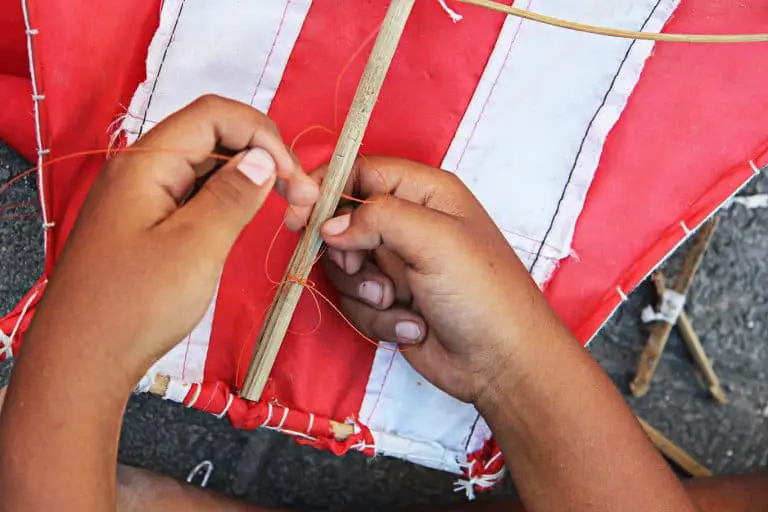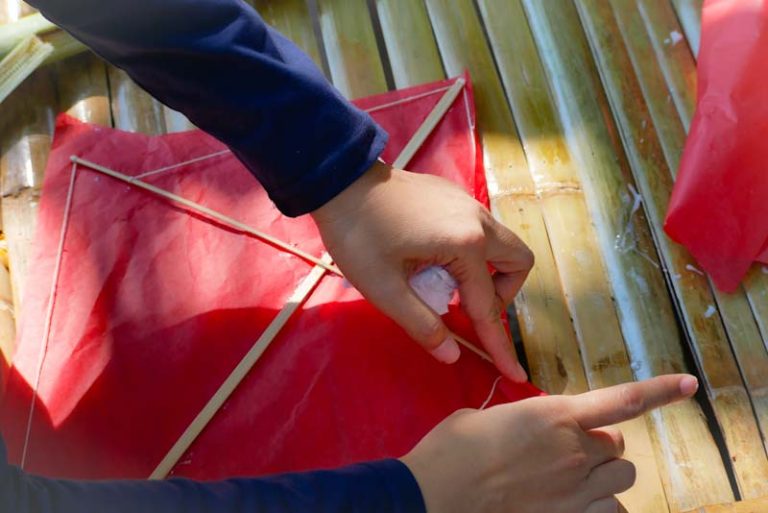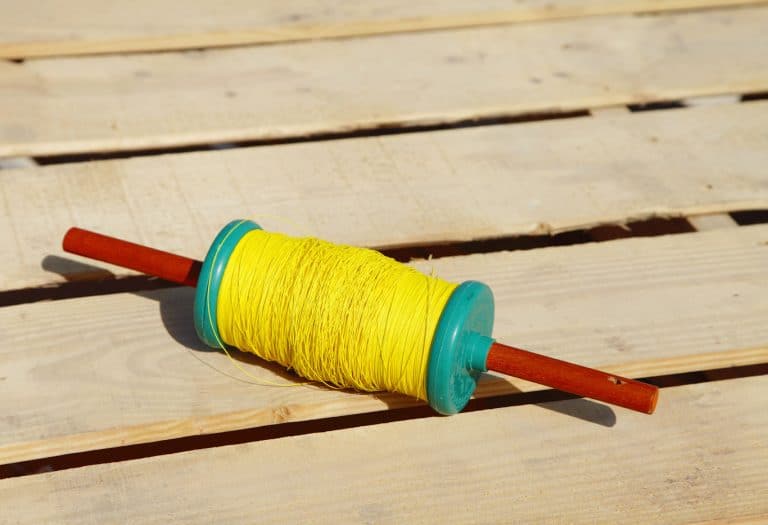Which Thread Type Is Best For Kite Flying?
Kite flying is a popular hobby enjoyed by many people, but it can be difficult to find the right line for kite flying. Line weight and material are important factors in choosing the best kite line. Different materials have different strengths and weaknesses, which should be considered when deciding on a type of line.
The best type of line for kite flying is a braided polyester line. It comes in a variety of weights and strengths, giving options for kites of different weights and sizes and flying conditions. The braided version is also less prone to tangles and easier to untangle with the braided polyester line.
There are essentially three types of line that are commonly used for flying kites: cotton, nylon, and polyester lines. The type of line you will use will depend on the quality and purpose of the kite you are flying and the conditions that you regularly fly your kite in. These lines differ in characteristics and in cost, so you will need to determine your priorities in kite flying to make the best choice of line for your kite.

Types Of Thread For Kite Flying
The thread used for kite flying is called by various names. Some call it thread, some call it line, and others still call it string. Whatever your choice in terminology, it is the line that extends from the kite to the flyer of the kite.
In the early days of kite flying, the Chinese used silk for flying their kites, while the Japanese made lines from cotton or hand-woven hemp. In India, braided cotton lines with 9 strands were made and then coated with a glue that was embedded with ground glass. These were often used on kites at kite fighting competitions where the object was to cut the lines of other kite flyers.
The choice of line is important and will have an effect on the type of kite you fly and the type of kite flying you engage in. The different line types have various characteristics that make them suitable or unsuitable for certain kites and certain flying styles.
The most common lines that are used for kites include the following.
- Cotton line. The cotton line is the original line used on kites, and it can be single lines or braided cotton. This line is often sold with lower-priced kites or with kites that are intended for children. Although this line is cheap, it has some disadvantages and has lost popularity in the kite flying community. Many kite stores no longer stock cotton thread for kite flying. Cotton thread is strong, which is a positive for this kind of kite thread, and it is not expensive. The disadvantage of this type of line is that it can be heavy in comparison to other types of line, and it tangles very easily.
- Nylon line. This type of line is very common among kite fliers and is often used for flying smaller single line kites. It is also relatively inexpensive, and it is strong and durable. The disadvantage of the twisted nylon line is that it will untwist over time, and it is also prone to tangle. The tangles can become messy and difficult to unravel. You can get this line in a braided form which lessens the tendency to tangle.
- Polyester line. This line can be braided or twisted and is more expensive than the other two options. However, this line is thinner and lighter, and stronger than the other two options, which accounts for the additional expense. Dacron is a brand name that supplies this type of line, and you will hear this brand mentioned synonymously with this line type. This line can tangle if you are not careful, but the tangles are easier to undo. An advantage of the braided line is that it lies flat when it unravels, rather than wanting to form loops that tangle easily.
The advantage of the nylon and polyester lines is that they are available in varying weights, thicknesses, and strengths. This makes them versatile since you can adjust the line size and breaking strain to the size and type of kite you fly.
What Is The Best Line To Use For Kites?
The best line to use for your kite is to use a line that is most appropriate for your type of kite. While this may sound unhelpful, there is no point in adding top quality, expensive line to an entry-level kite when a basic nylon line will do the job.
So, if you have an entry-level kite and are just starting out and generally fly in medium wind conditions, then a nylon line will be sufficient for your needs. Even though it is prone to tangle, you have not earned your stripes as a kite flyer until you have had to untangle a crow’s nest of kite line!
However, if you want to go for the best kite flying line, then a braided polyester line would be the line of choice. The polyester lines give you a wide variety of weights and diameters to select a line that is appropriate for your kite.
From the perspective of strength to weight ratio and versatility, the polyester braided line is the best line to use for kite flying. While this line is a little more expensive, the better quality line is worth the expense since this line is also abrasion and stretch resistant and will last a long time.
Some Tips On Kite Lines
Many people neglect the line on their kites and also think that any old line will do. This is not the case, and if you want to get the most out of your kite, using the right line will enhance the performance of the kite and make your kite flying safer and more fun!
- Kite lines can stretch and wear out over time, so it is worthwhile checking your lines periodically for signs of wear. Lines that are showing signs of wear or fraying should be replaced as soon as possible. This goes not only for the line itself but also for the bridle lines on the kite that connect to the mainline.
- Knots are a weak point in the line. Knots can be strengthened by using a polyester sleeve over the knot and will also help to stop the knot from sliding up and down the line.
- Tight kite lines can become dangerous because of the tension that these lines can be under, especially if the wind is strong. The line can cut your hands or cut people nearby. Always fly your kite away from people and consider wearing gloves to protect your hands from the line.
- Never use fishing line to fly your kite. Fishing line has a lot of elasticity or stretch built into it, and the line can stretch significantly before it snaps. When this happens, the snapped line can lash back at you or anyone in the vicinity and cause severe injury. Kite lines are designed to not have the same amount of stretch to them, which makes them safer to use on your kite.
- Don’t use steel cables or lines on your kite. A tight steel line can cut like a razor blade, so you should never put a steel line on your kite. The steel line will also act as a conductor and can pose a risk for the kite flyer from electric power lines, lightning, and even from a discharge of static electricity build-up on the kite at higher altitudes and strong winds.
Conclusion
As kids, I remember making kites and using basic butcher string to tie to our kites, and while we may have run ourselves ragged to get the kites airborne, we managed to get it done. This shows that you don’t have to have anything fancy to get your kite flying.
However, advances in modern products and technology have made it possible to get some awesome kite-flying lines at fairly reasonable prices and within reach of most kite flyers.
So while it is possible to get by with lesser materials for your kite line, why not try out a good braided polyester line to improve your kite flying and make it less of a physical workout!







